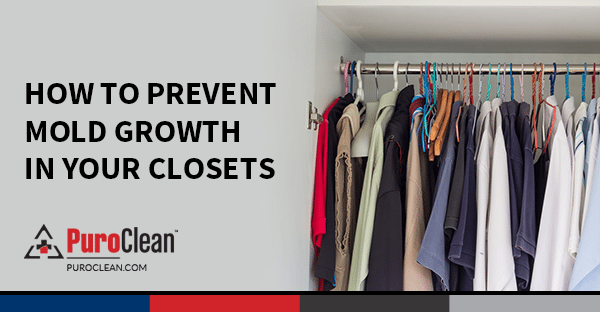Table of Contents
Wondering how to get rid of black mold in your home? Then, before you try anything, some warnings are in order. First, you can’t procrastinate on this issue. Household black mold poses a serious threat to your health. If you see any in your home, you need to get it cleaned up and totally irradiated as soon as possible.
The other problem is, cleaning up mold without the proper safety precautions is also hazardous. Plus, if the mold isn’t dealt with properly, it will just keep coming back. So, what do you do? Keep reading, that’s what. Below is a guide that explains everything you need to know. Get rid of your black mold problem safely and effectively by following these tips.
1. Call a Professional Mold Remediation Service

First, it’s highly inadvisable that you try to remove black mold on your own. As mentioned in the warnings above, cleaning up black mold is a dangerous and precise job that should only be attempted by professionals. They have the proper equipment and expert training required to get the job done right.
The following points describe the process that professionals use to remove black mold. This will illustrate the hazards and potential complications that can arise if black mold removal is handled improperly.
2. Identify the Mold
Are you sure your home has black mold? The mold must be identified before remediation can begin. This starts with a visual inspection. True black mold, known as stachybotrys chartarum, appears as black or dark green splotches. Also, it will smell musty/rotten. The smell often resembles that of soil.
Next, there are a few ways to test for mold. One way is to place a few drops of bleach on a small area of the suspected mold. If that spot gets lighter in color or disappears, it’s not mold. It’s probably mildew and can be cleaned up with more bleach. To know for sure, though, you need a professional mold removal service to test it.
3. Determine/Address the Moisture Source
Mold requires constant moisture to live and grow. If you do have a mold infestation, it’s only happening because there’s excess moisture in the area. It’s essential that you find and fix the cause of this moisture problem before attempting mold removal. If you don’t, the moist environment will allow the mold to keep coming back. Common causes of this are:
- Leaky plumbing
- Leaky roofs
- Flooding/water damage that wasn’t dried fast enough
- Too much indoor humidity
Here’s what to do about these issues.
Water Damage
If you know of recent water trauma in the moldy area, such as flooding, you should contact a professional water damage restoration/mold remediation service. These professionals will not only clean up the mold but solve the moisture problem as well.
Excess Humidity
Aside from that, get a humidity gauge in your home. To prevent mold, keep your humidity between 30% and 50%. Use your air conditioner or a dehumidifier for this.
Leaks
If neither of those issues is the problem, have your roof/plumbing inspected for leaks. Get these leaks and any subsequent water damage repaired before removing the mold.
4. Gear Up

Cleaning up mold causes spores to be released into the air. Thus, the person doing this task needs safety gear to avoid contact with these spores. For protecting your mouth, nose, and lungs, your covid mask is not sufficient. You’d need an air-purifying respirator. All skin and hair should be covered in a full-body suit, such as painter’s coveralls. Safety goggles are required, too.
5. Preparing the House
Likewise, you want to prevent spores from spreading to the rest of your home. Start by shutting off your HVAC to keep the air (and the spores) from circulating throughout the house. You can, however, open a window/door to the outside (in the infested room) and use a fan to blow the spores out of the house.
Shut all other doorways that lead out of the infested room to keep the spores contained. Seal these doorways by taping a tarp over them.
6. Treating the Mold
Any cleaning solution used to clean up mold must achieve two things. It must penetrate deep into the mold and kill it. There are chemical cleaners specifically designed for this purpose. But one can also use bleach or natural remedies like baking soda and vinegar.
Typically, the cleaner is sprayed upon the mold and left sitting for 30-60 minutes to penetrate it fully. Next, the mold is thoroughly scrubbed away with a sponge, leaving none behind. Lastly, the area is allowed to thoroughly dry. If necessary, this process is repeated to remove any remaining mold.
7. Cleanup

One must be very careful when cleaning up the supplies and tarps after this process. First, the cleaning supplies and any debris that might contain mold should be removed. Next, the tarps should be rolled up very slowly so that they don’t cause enough wind to redisperse the spores all over. If you used a fan to blow the spores outside, keep this on for at least an hour after cleanup.
8. Start Preventative Measures
Finally, you need to make sure you prevent moisture issues such as the ones that caused the black mold problem in the first place. These are the tips mentioned above in point number 3.
Remember This Guide on How to Get Rid of Black Mold
Now that you know how to get rid of black mold, don’t ignore the serious warnings in this guide. Keep this page bookmarked and follow these tips to remove black mold safely. If you require water damage restoration, mold remediation, or biohazard cleanup services, we’ve got you covered. Contact PuroClean Certified Restoration Specialists now so we can tackle your problem right away.




 PuroClean Certified Restoration Specialists
PuroClean Certified Restoration Specialists